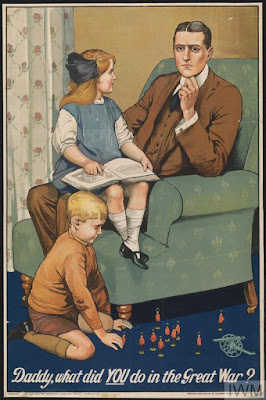 |
| British military band playing in a town square in Arras, 30 April 1917, © IWM (Q 6407), Non-Commercial Licence |
THE BATTLE RESUMED
The battle of Arras has been resumed, and the correspondents agree that the fighting is of a harder and more desperate character than any which has preceded it. Only those actually engaged are able to appreciate the significance of this, for all the fighting has long since reached a point where it becomes almost impossible for the pen of the most gifted writer to do anything more than convey a faint impression to the most attentive reader of what is actually taking place. On this occasion there can, of course, be no question of a surprise. Our intentions were disclosed by our first successful attack, and during the time taken in bringing up our heavy guns and the accomplishment of the stupendous task which the launching of an offensive now involves, the Germans have brought up their reserves, strengthened their artillery, and excercised to the full their ingenuity in the construction of defensive works, in which, as usual, the machine-gun forms a most important part. It is safe to say that the British troops, in the battles which are now proceeding, are meeting the enemy at the pinnacle of his strength, and, what is more, are beating him.
There have been no spectacular victories such as that of the capture of Vimy Ridge, but the enemy has been driven back, and the reports from Headquarters show that the positions captured are maintained, despite the most desperate counter-attacks. When the great German retreat was in progress we were assured by Berlin that one object was to change the character of the fighting. British troops, the world was informed, had been trained for trench warfare only, in open fighting they would stand no chance against the enemy. But it is significant that the Germans have done nothing to avail themselves of the opportunities which have since been presented of putting their boast to the test. When driven from the dugouts, caves and concrete trenches, their only concern has been to get as quacking as possible to the next line of entrenchment.
 |
| 18 pounder gun of the Royal Field Artillery in action. Near Arras, 29 April 1917, © IWM (Q 5811), Non-Commercial Licence |
Berlin now attempts to dismiss the whole of the Anglo-French offensive as a matter of not the slightest importance. A characteristic message was that which declared that “in the Arras battle the renewed British attacks were without any success” and then added that in the sector between Berry au Bac and Auberive the Germans between the 16th and 19th April have captured 30 officers, 1,472 men, and 93 machine guns, conveying the implication that the prisoners had been taken since the attack has been renewed, whereas the figures represent the stage army which did duty on the occasion of the beginning of the British offensive. In fact, the military critics are having a bad time in Germany just at the present. The Franco-British Armies have, in their recent offensives, taken some 35,000 prisoners, 350 guns, and considerable quantities of war material.
The Germans are not told of these losses, and they are assured that while their troops have been forced to “withdraw” from positions which were previously declared to be impregnable, it has been done for a purpose, and there are occasions when it is an advantage to yield. All of which may be perfectly true, but has little bearing on the real situation. The fall of St. Quentin is foreshadowed in a semi-official message from Berlin, which states that the entire population was transported to places in the rear. In the other districts the same authority states that the male and female population between the ages of 15 and 60 was deported. Mothers with children under 15 were allowed to remain. It is evident from this that it was not any concern for the lives of the inhabitants which prompted this deportation, which can be justified by no military expediency. No parallel for such inhuman conduct is to be found in modern history of warfare outside of that taking place between the most depraved of savage tribes.
Describing a recent visit to the liberated regions in Northern France, Mr. Penfield, late Ambassador of the United States in Vienna, declared that he could not believe, despite all the descriptions that he had read, that a people claiming to be civilised could have descended to such a degree of barbarism. But surely the people who make war on hospital ships are capable of any iniquity. And, after all, what is to be seen in Northern France, horrible as it is, is as nothing compared with the lot of the unfortunate people in the power of the Huns, or the anguish of the “mothers with children under 15” who have been torn asunder from every other member of the family. Truly the world has an account to settle with a nation which thus deliberately and callously makes war upon old men, women, and children.







